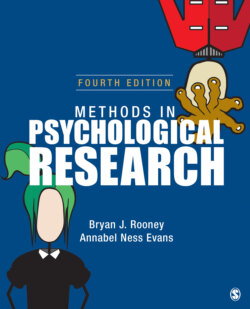Читать книгу Methods in Psychological Research - Annabel Ness Evans - Страница 79
На сайте Литреса книга снята с продажи.
Mediating Variables
ОглавлениеSometimes the relationship between cause and effect is directly linked—your baseball strikes a window, and it breaks. However, there are many instances when this relationship is anything but direct—you look at a bright light, and your pupil constricts. Certainly, this is a cause-and-effect relationship, but there are many intervening steps. Suppose you just had an eye examination and the doctor used eye drops to dilate your pupils. What will this do to the cause-and-effect relationship? You leave the office and go into the bright sunlight and . . . nothing, no pupil constriction. Clearly, the eye drops are acting on some mediating variable between the light and the pupil constriction.
Identifying mediating variables may be centrally important to your research or entirely trivial, depending on how the research fits into the particular theory. For much behavioral research, the mediating variables may be unimportant. Instead, the focus is on identifying and describing the environmental cues (cause) that elicit behavior (effect). Contrast this position with cognitive research, where much of the focus is on identifying mediating variables.
In the Knez (2001) study, the identification of a mediating variable was an important point. He was trying to show that the characteristics of light do not directly influence cognitive performance but, rather, that the light influences the participant’s mood and that a change in mood, in turn, affects the participant’s performance.
In another example of a mediating variable, Lassri and Shahar (2012) examined whether childhood maltreatment affects the quality of romantic relationships between adults. They administered a questionnaire to 91 undergraduate students at the University of Negev, Israel, and measured a number of variables, including childhood emotional maltreatment, self-criticism, and quality of romantic relationships. By using a correlational technique called structural equation modeling (which will be discussed later in this chapter), they found that emotional maltreatment in childhood is related to increased incidence of self-criticism and that self-criticism is related to poor romantic relationships. In other words, a childhood of emotional maltreatment makes a person more likely to engage in critical self-statements, which leads to the person experiencing troubled romantic relationships as an adult. Self-criticism is a mediating variable between childhood emotional maltreatment and adult romantic relationships.
The introduction section of an article gives us a good understanding of the important variables in the study. In the method section, we will find detailed information about how the study was conducted and which measures were used.
